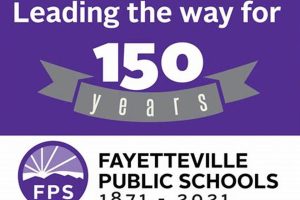Publicly funded schools operate as government entities, not private organizations seeking profit. Their funding comes primarily from local, state, and federal taxes, allocated to provide free education to all children within the designated district. For example, a community’s property taxes contribute significantly to the operational budget of its public schools, covering expenses like teacher salaries, facility maintenance, and educational resources.
This tax-funded model ensures equal access to education, a cornerstone of democratic societies. By removing the profit motive, the focus remains on student learning and development rather than financial gain. Historically, the establishment of free public education systems was a pivotal step towards greater societal equality and opportunity. These systems continue to play a crucial role in promoting social mobility and a well-informed citizenry.
Understanding the non-profit nature of public education provides essential context for discussions surrounding school funding, resource allocation, and educational policy. The following sections will delve deeper into these critical aspects of the public education system.
Understanding Public School Funding
Navigating the complexities of public school finance requires understanding its non-profit structure. The following tips offer insights into how these essential community institutions are funded and how citizens can engage with the process.
Tip 1: Research Local Tax Policies: Property taxes often constitute a significant portion of school funding. Understanding local tax assessments and how they impact school budgets allows for informed participation in community discussions regarding education finance.
Tip 2: Attend School Board Meetings: School board meetings offer a public forum for budget discussions and resource allocation decisions. Attending these meetings provides valuable insight into the financial priorities of the district.
Tip 3: Explore State Education Funding Formulas: Each state employs a formula for distributing education funds to local districts. Understanding these formulas helps one grasp how state-level policies impact local schools.
Tip 4: Examine Federal Education Funding Programs: Federal programs supplement state and local funding, often targeting specific student populations or educational initiatives. Researching these programs reveals the federal government’s role in supporting public education.
Tip 5: Advocate for Education Funding: Informed advocacy requires a grasp of the funding landscape. By understanding the various funding streams and their impact, individuals can effectively advocate for policies that support strong public schools.
Tip 6: Support School-Based Fundraising Initiatives: While not replacing tax-based funding, school-based fundraising can supplement resources for specific programs or activities. Supporting these initiatives contributes directly to student opportunities.
By understanding how public schools are financed, individuals can become more effective advocates for equitable and adequate educational resources within their communities. This knowledge empowers informed decision-making and strengthens the foundation of public education.
Ultimately, a well-informed public plays a crucial role in ensuring the ongoing success and vitality of the public education system.
1. Public Funding
Public funding forms the cornerstone of the non-profit nature of public schools. This funding, derived primarily from local, state, and federal taxes, directly supports the operational costs of providing free education to all eligible students. This reliance on public funds distinguishes public schools from private institutions, which often rely on tuition fees and private donations. The absence of a profit motive allows public schools to allocate resources based on educational needs rather than financial returns, ensuring equitable access to education regardless of socioeconomic status. For example, public funding enables schools to offer specialized programs for students with disabilities, a service often unavailable or cost-prohibitive in private settings.
The level of public funding directly impacts the quality and availability of educational resources, including teacher salaries, classroom technology, and extracurricular activities. Adequate public funding can lead to smaller class sizes, better-equipped facilities, and a broader range of academic and extracurricular offerings. Conversely, insufficient funding can result in overcrowded classrooms, outdated resources, and limited program options. This direct link between public funding and educational quality underscores the importance of robust and equitable funding mechanisms for public schools. For instance, disparities in property tax revenues across different districts can lead to significant discrepancies in per-pupil funding, highlighting the need for equitable funding distribution models.
Understanding the integral relationship between public funding and the non-profit status of public schools is crucial for informed civic engagement. Advocacy for equitable and adequate school funding directly supports the mission of providing quality education for all students. Public discourse and policy decisions regarding school finance directly impact the ability of public schools to fulfill their educational mandate. This understanding empowers communities to advocate for policies that prioritize education and ensure equitable access to learning opportunities for all children.
2. Community Benefit
The non-profit nature of public schools intrinsically links them to community benefit. Educated populations contribute to stronger economies, lower crime rates, and increased civic engagement. Public schools, by providing free education, serve as a vital engine for community development and social progress. This societal benefit underscores the importance of viewing public education as an investment, not merely an expenditure. For example, a well-educated workforce attracts businesses and fosters economic growth, ultimately benefiting the entire community. Furthermore, educated individuals are more likely to participate in democratic processes, strengthening civic institutions and contributing to a more informed and engaged citizenry.
The community benefit derived from public education extends beyond economic and civic contributions. Public schools often function as community hubs, providing spaces for extracurricular activities, adult education programs, and various social services. This multifaceted role strengthens community bonds and fosters a sense of belonging. For instance, many schools offer after-school programs that provide safe and enriching environments for children, supporting working families and reducing the likelihood of juvenile delinquency. Moreover, schools can serve as polling places during elections, facilitating civic participation and strengthening democratic processes within the community.
Recognizing the profound community benefits inherent in public education reinforces the importance of supporting these vital institutions. Adequate funding, community involvement, and effective policies are essential for maximizing the positive impact of public schools on society. Challenges such as funding disparities and achievement gaps require ongoing attention and collaborative efforts to ensure that all members of the community benefit from a strong public education system. A thriving public education system serves as a cornerstone of a healthy and prosperous community, fostering individual growth and collective well-being.
3. No Profit Distribution
The absence of profit distribution is a defining characteristic of public schools and directly reinforces their non-profit status. Unlike businesses designed to generate financial returns for investors, public schools reinvest all funds received back into the educational mission. This fundamental difference ensures that resources are allocated to support student learning, improve educational programs, and enhance facilities, rather than being distributed as profit. This reinvestment model allows public schools to focus on providing quality education for all students, regardless of socioeconomic status. For example, surplus funds might be used to purchase new technology for classrooms, provide professional development opportunities for teachers, or expand access to extracurricular activities. This reinvestment cycle strengthens the educational infrastructure and enhances the overall quality of public education.
The “no profit distribution” principle fosters transparency and accountability in public school finance. Publicly accessible budgets and expenditure reports allow communities to track how funds are allocated and ensure that resources are used effectively to support student learning. This transparency builds public trust and fosters community engagement in the educational process. For instance, school districts often hold public hearings on budget proposals, providing opportunities for community members to voice their opinions and contribute to the decision-making process. This level of transparency and accountability is a hallmark of non-profit organizations and distinguishes public schools from for-profit entities.
The commitment to reinvesting funds directly back into education underscores the societal value placed on public schools as essential institutions serving the common good. This non-profit structure allows public schools to prioritize student needs and maximize resources for educational purposes. Challenges such as ensuring equitable funding distribution and addressing achievement gaps require ongoing attention to ensure that all students benefit equally from the “no profit distribution” principle. By prioritizing student learning and community well-being over financial profit, public schools fulfill their critical role in fostering a more equitable and prosperous society.
4. Government Oversight
Government oversight plays a crucial role in ensuring the accountability and effective operation of public schools as non-profit entities. This oversight, exercised at the local, state, and federal levels, helps guarantee adherence to educational standards, equitable resource allocation, and responsible financial management. State departments of education, for example, establish curriculum guidelines, assess student performance, and monitor teacher certification, ensuring a baseline level of educational quality across all public schools within their jurisdiction. Local school boards, elected by the community, provide oversight of district budgets, approve school policies, and hire superintendents, ensuring that schools operate in accordance with community values and priorities. Federal agencies, such as the Department of Education, administer federal funding programs, enforce anti-discrimination laws, and collect data on national educational trends, contributing to a broader understanding of the challenges and successes of public education across the country. This multi-layered system of oversight reinforces the non-profit nature of public schools by prioritizing student learning and community benefit over financial gain.
The connection between government oversight and the non-profit status of public schools becomes evident when considering the potential consequences of its absence. Without robust oversight, public funds intended for education could be mismanaged, educational standards could erode, and equitable access to learning opportunities could be compromised. For instance, without independent audits of school finances, funds could be diverted for purposes unrelated to education, depriving students of essential resources. Similarly, without standardized testing and performance evaluations, schools might lack the necessary incentives to improve educational outcomes, leading to disparities in student achievement. The presence of government oversight acts as a safeguard against these potential pitfalls, ensuring that public schools remain true to their non-profit mission of providing quality education for all students. This oversight fosters public trust and confidence in the public education system.
Effective government oversight of public schools requires a balance between accountability and local autonomy. While standardized measures and regulations are essential for ensuring quality and equity, local communities also need the flexibility to tailor educational programs to meet the specific needs of their students. The ongoing challenge lies in finding the appropriate balance between centralized oversight and decentralized decision-making. This balance ensures that public schools remain responsive to community needs while maintaining adherence to broader educational standards and principles of fiscal responsibility. Ultimately, effective government oversight contributes significantly to the strength and sustainability of public education as a cornerstone of a democratic society.
5. Mission-driven
The non-profit nature of public schools directly connects to their mission-driven focus. Unlike for-profit entities prioritizing financial returns, public schools operate with a core mission of providing education to all students, regardless of background or circumstance. This mission-driven approach shapes resource allocation, curriculum development, and overall operational strategies, ensuring alignment with educational goals rather than profit motives. Understanding the mission-driven nature of public education is crucial for interpreting policy decisions, evaluating school performance, and engaging in informed advocacy for educational improvement.
- Equitable Access
Public schools strive to provide equitable access to quality education for all students within their designated boundaries. This commitment to equity drives initiatives such as specialized programs for students with disabilities, English language learner support, and free and reduced-price meal programs. These programs, often funded through public resources and donations, aim to level the playing field and ensure that all students have the opportunity to succeed academically, regardless of their socioeconomic background or individual learning needs. For example, a public school might allocate additional resources to provide individualized instruction for students with learning disabilities, ensuring they receive the support necessary to reach their full potential. This commitment to equitable access exemplifies the mission-driven nature of public education and its focus on serving all students.
- Academic Achievement
The core mission of public schools centers on fostering academic achievement for all students. This focus drives curriculum development, instructional strategies, and assessment practices. Schools implement various programs and initiatives to support student learning, including advanced placement courses, tutoring services, and individualized learning plans. For example, a public school might adopt a data-driven approach to instruction, using student performance data to identify areas of weakness and tailor teaching methods to address specific learning needs. This focus on continuous improvement and data-informed decision-making demonstrates the mission-driven approach to enhancing academic outcomes for all students.
- Civic Engagement
Public schools play a vital role in preparing students for informed and engaged citizenship. This civic mission is reflected in curriculum choices, extracurricular activities, and opportunities for student leadership. Schools often incorporate civic education into social studies curricula, organize student government elections, and encourage participation in community service projects. For example, a public school might organize a mock election to familiarize students with the electoral process and encourage civic participation. This emphasis on cultivating responsible and engaged citizens demonstrates the mission-driven focus of public schools on contributing to a well-informed and participatory democracy.
- Community Well-being
Public schools contribute significantly to the overall well-being of their communities. They serve as community hubs, providing resources and support for families and offering spaces for various activities. Many schools host adult education classes, partner with local organizations to provide social services, and offer after-school programs for children. For instance, a public school might collaborate with a local health clinic to offer free health screenings for students and families, addressing health disparities and promoting community well-being. This commitment to serving the broader community exemplifies the mission-driven nature of public schools and their role in strengthening social fabric.
These interconnected facets of the public school mission underscore the fundamental connection between being mission-driven and operating as a non-profit entity. By prioritizing educational goals and community well-being over profit motives, public schools fulfill their vital role in fostering a more equitable and prosperous society. This mission-driven approach ensures that public resources are invested in developing well-rounded individuals, promoting civic engagement, and strengthening communities. The ongoing challenges faced by public schools, such as funding disparities and achievement gaps, require continued dedication to the core mission of providing quality education for all students, regardless of background or circumstance. This commitment to the mission remains central to the ongoing success and vitality of public education as a cornerstone of a democratic society.
Frequently Asked Questions About Public School Funding
The following questions and answers address common inquiries regarding the financial structure of public education.
Question 1: How does the non-profit nature of public schools impact resource allocation?
Resources are allocated based on educational needs, maximizing community benefit rather than generating private profit. Funds are reinvested to enhance educational programs, support student services, and improve facilities.
Question 2: What is the primary source of funding for public schools?
Public schools primarily rely on funding from local, state, and federal taxes. The specific proportion from each source varies by location and district.
Question 3: How does the absence of a profit motive influence educational priorities?
The absence of profit motives allows public schools to prioritize student learning and well-being above all else. Decisions regarding curriculum, staffing, and resource allocation focus on maximizing educational outcomes rather than generating financial returns.
Question 4: How can community members influence public school funding decisions?
Community members can influence funding decisions by participating in school board meetings, engaging in local and state elections, and advocating for education-friendly policies. Understanding local and state funding mechanisms empowers informed advocacy and promotes community engagement.
Question 5: What role does government oversight play in public school finance?
Government oversight ensures accountability and transparency in the use of public funds allocated to schools. Regular audits, budget reviews, and compliance monitoring help safeguard public resources and maintain public trust.
Question 6: How does the non-profit model of public education benefit society as a whole?
By educating future generations, public schools contribute to a more informed and engaged citizenry, strengthening communities and fostering economic growth. The non-profit model ensures that all members of society benefit from an educated populace, regardless of socioeconomic status.
Understanding the financial structure of public education empowers informed community engagement and effective advocacy for policies that support student success and community well-being.
For further exploration of specific aspects of public school finance, please consult the resources provided below.
The Non-Profit Nature of Public Education
Public schools operate as non-profit entities, a defining characteristic shaping their mission, funding, and accountability. This structure prioritizes student learning and community benefit over financial gain. Public funding, derived primarily from taxes, supports operational costs, ensuring free access to education for all eligible students. Government oversight guarantees responsible resource allocation and adherence to educational standards. The absence of profit distribution ensures reinvestment of funds back into educational programs and resources, maximizing community benefit.
The non-profit nature of public education represents a societal investment in future generations, fostering informed citizenry, economic growth, and community well-being. Continued support and advocacy for equitable and adequate funding are essential to the ongoing success of public education as a cornerstone of a thriving democratic society.







